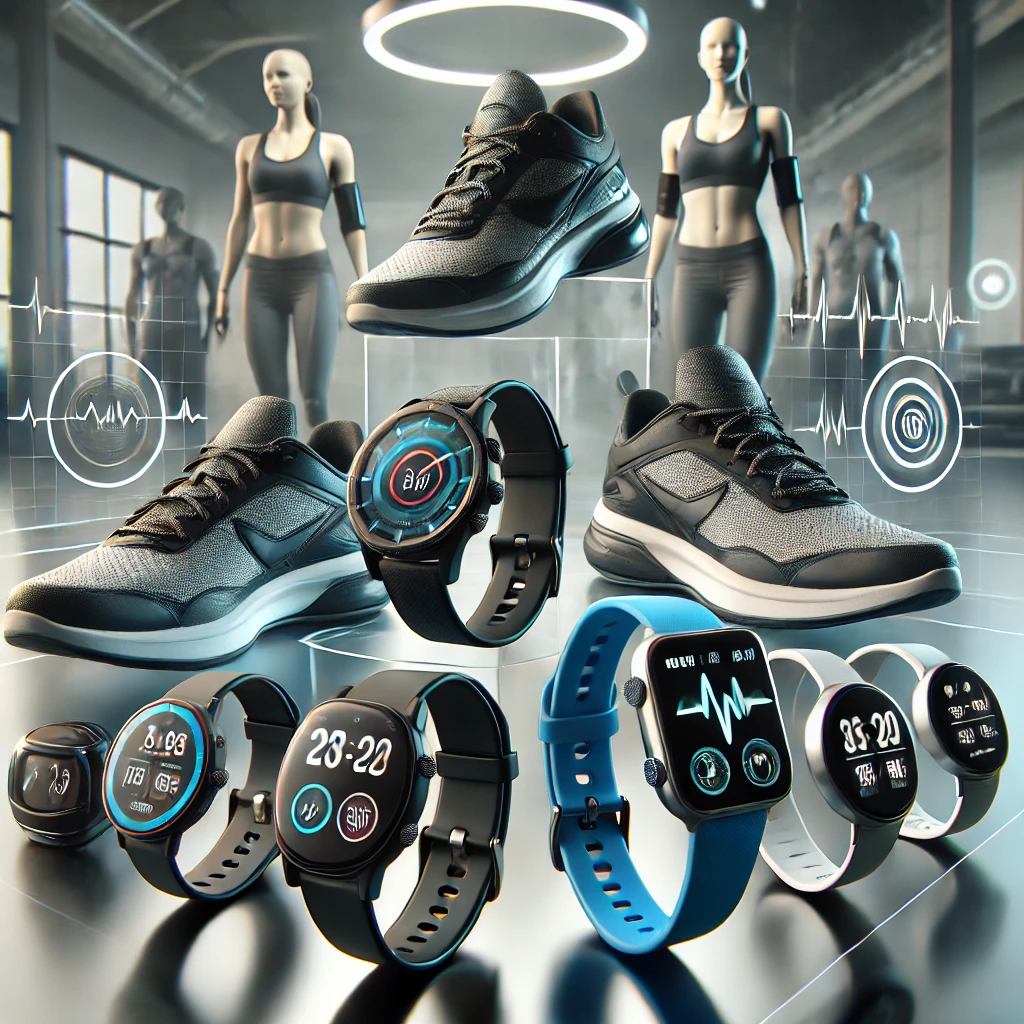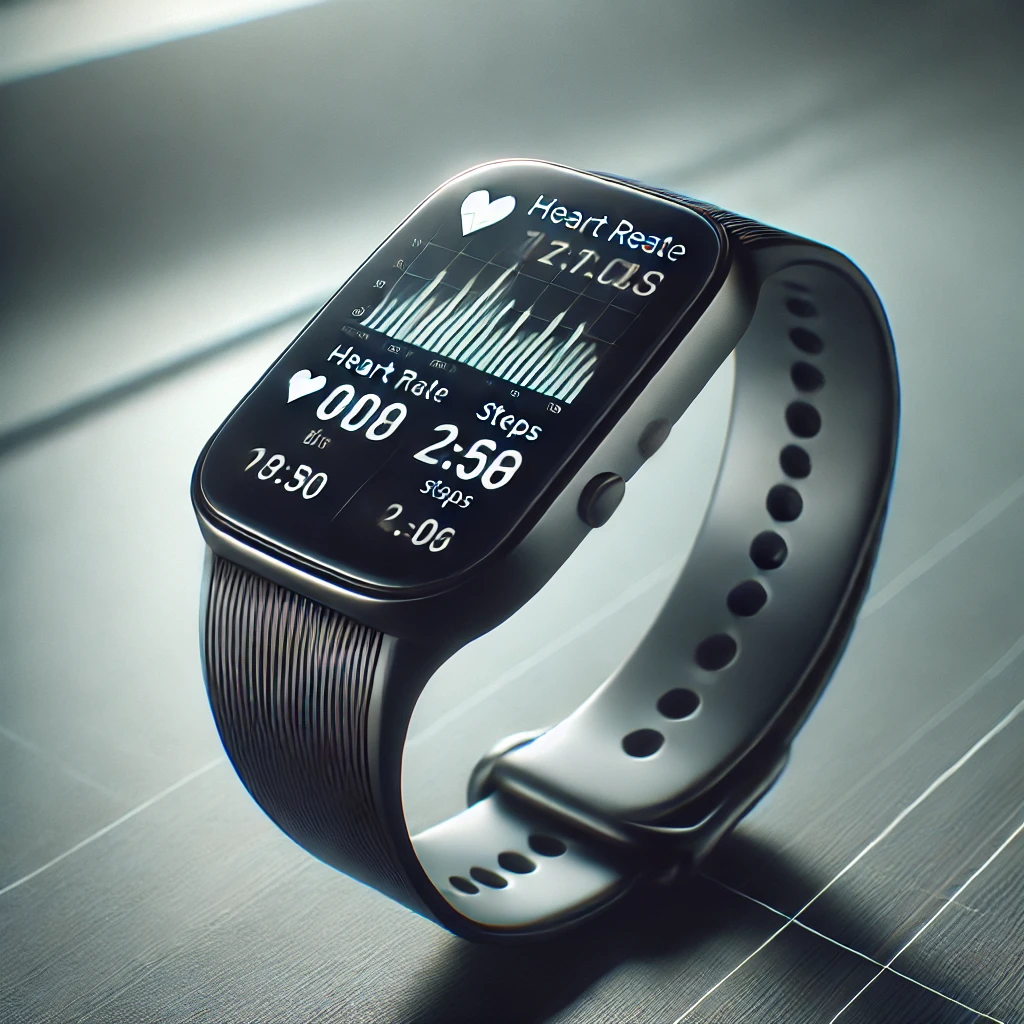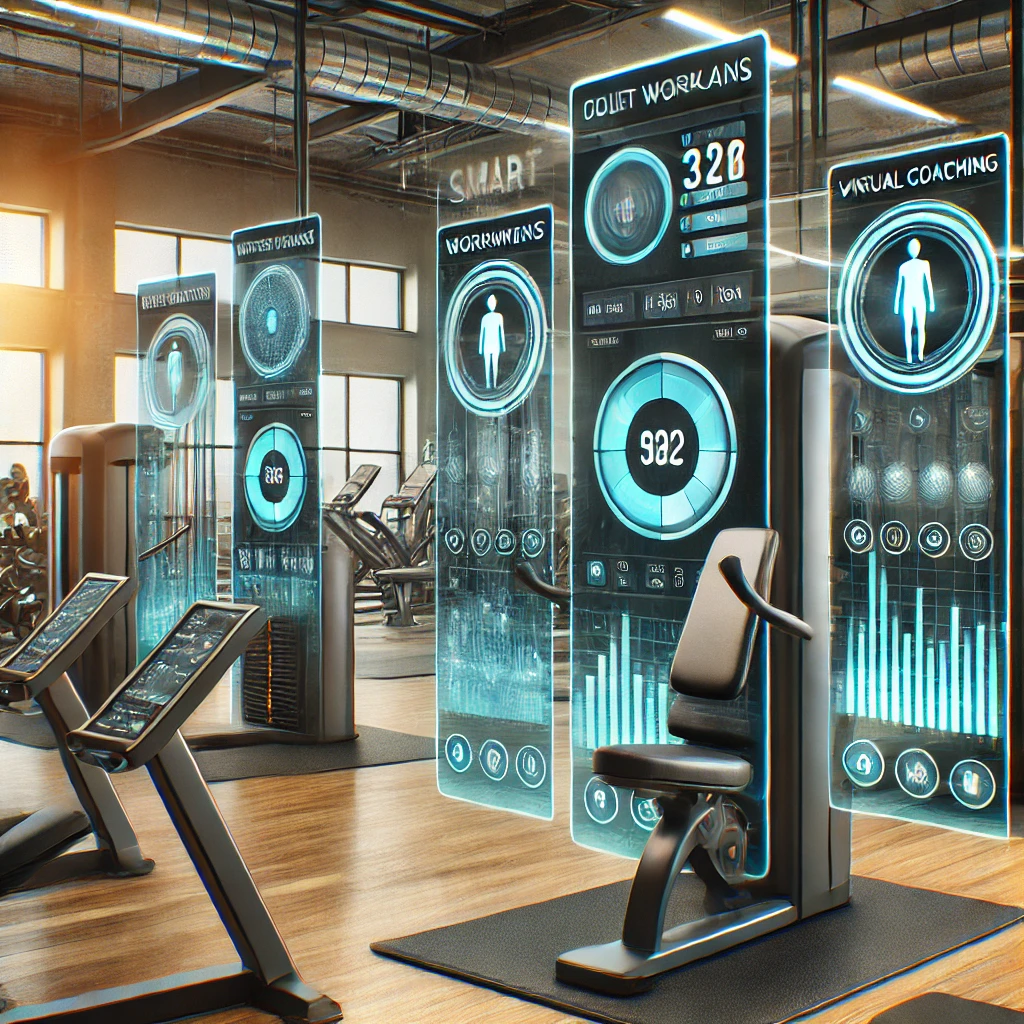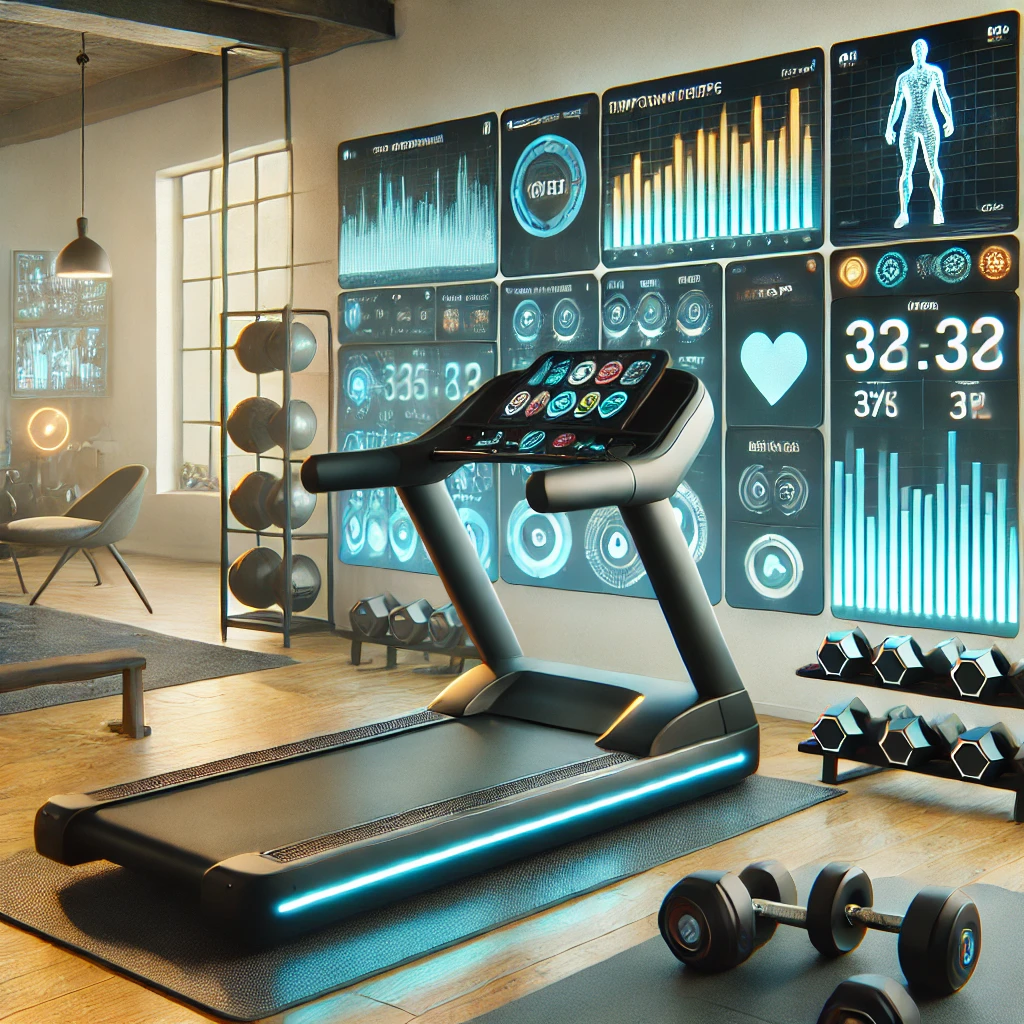In today’s fitness world, technology has become an integral part of personal health and athletic performance. From wearable devices that track heart rates and sleep patterns to smart gym equipment that adjusts resistance based on your progress, the intersection of sports and technology is revolutionizing the way we train, compete, and achieve our fitness goals. This surge in smart sports equipment is reshaping not only how athletes approach their routines but also how they understand their bodies and unlock their full potential.
Redefining the Athlete’s Toolbox

In the realm of sports and fitness, the tools an athlete uses can make a profound difference in their performance, recovery, and overall success. Over time, the “toolbox” available to athletes has evolved far beyond simple weights and stopwatches. Today’s athletes have access to a vast array of sophisticated devices, advanced technologies, and data-driven solutions that empower them to push boundaries and achieve levels of performance once thought impossible. The modern athlete’s toolbox is no longer just about physical equipment—it’s about harnessing knowledge, insight, and cutting-edge innovation.
A New Age of Data-Driven Insights
The introduction of smart sports equipment and wearable technology has revolutionized how athletes understand their bodies and their training. From heart rate monitors and GPS-enabled watches to advanced motion sensors and biometric trackers, these tools provide a continuous stream of data that was once only accessible to elite professionals working with large teams of specialists. Now, athletes at every level can monitor their performance, identify patterns, and make informed decisions to enhance their training regimens.
This data-driven approach allows athletes to move beyond guesswork. Instead of relying solely on subjective feedback or instinct, they can turn to objective metrics that reveal their progress, strengths, and areas for improvement. For example, a runner can track cadence, stride length, and ground contact time, then use that information to refine their technique. A weightlifter can measure bar speed, force output, and fatigue levels, ensuring that every set and rep contributes to their goals. By leveraging these insights, athletes gain a deeper understanding of their capabilities and can tailor their training for maximum efficiency and effectiveness.
Wearable Technology: More Than Just Fitness Trackers
While fitness trackers and smartwatches have become household staples, the next generation of wearables goes well beyond counting steps or tracking calories. Advanced wearables now measure complex physiological metrics such as heart rate variability (HRV), oxygen saturation levels, and muscle activation patterns. These devices provide a comprehensive picture of an athlete’s internal state, helping them fine-tune their approach to training, recovery, and competition.
Additionally, wearable technology is becoming more specialized. Sports-specific wearables are designed for particular disciplines, offering detailed feedback that helps athletes excel in their chosen field. For instance, swimmers can use smart goggles with built-in displays that show lap times and stroke efficiency. Cyclists can rely on power meters and smart sensors to optimize their pedaling technique and wattage output. Even team sports players can benefit from wearables that track sprinting speed, positional data, and in-game performance.
These specialized wearables are not just about collecting data—they’re about turning that data into actionable insights. With the help of connected apps and online platforms, athletes can visualize their progress, set goals, and receive personalized recommendations that keep them moving forward.
Recovery Tools That Accelerate Progress
Recovery has always been a critical component of athletic success, and today’s toolbox is filled with tools designed to speed up the process. From percussion massage devices that alleviate muscle soreness to compression gear that improves circulation, modern recovery tools are backed by science and built to deliver results.
One notable innovation is the use of smart compression systems. These devices use pneumatic technology and integrated sensors to apply precise pressure to muscles and joints, reducing swelling and promoting faster recovery. Many of these systems also come with companion apps that guide users through tailored recovery protocols, ensuring that each session is optimized for their specific needs.
Additionally, cryotherapy chambers, infrared sauna blankets, and electromagnetic pulse devices are becoming more accessible. These tools, once limited to professional training facilities, are now available to a broader audience, giving athletes at all levels the ability to recover like the pros. By incorporating these cutting-edge recovery methods into their routine, athletes can reduce downtime, prevent injuries, and maintain consistent performance over time.
Enhanced Communication and Feedback
Another critical component of the modern athlete’s toolbox is the ability to communicate and receive feedback in real time. Thanks to advancements in connectivity and integration, athletes and coaches can stay connected regardless of location. Video analysis platforms, for example, allow athletes to upload recordings of their training sessions, receive detailed feedback from experts, and review their technique with pinpoint accuracy.
Remote coaching has also gained popularity. With the rise of connected fitness equipment and live-streaming capabilities, athletes can work with coaches and trainers from anywhere in the world. This access to top-tier expertise ensures that athletes receive consistent guidance, even when they’re training independently.
Furthermore, virtual reality (VR) and augmented reality (AR) tools are beginning to make their way into athletic training. These immersive technologies allow athletes to visualize complex movements, practice situational scenarios, and refine their mental game in a controlled environment. By combining real-time feedback with cutting-edge visualization tools, athletes can improve both their physical skills and their strategic thinking.
Building a Smarter Training Environment
The modern athlete’s toolbox is not limited to personal devices—it extends to the entire training environment. Smart gym equipment, for instance, offers integrated displays, real-time resistance adjustments, and guided workouts that adapt to an athlete’s performance level. Connected strength machines can track reps, sets, and rest times, then provide recommendations for progression based on the athlete’s goals and performance history.
Even traditional equipment is being reimagined with technology. Smart weights, for example, can measure force output and bar speed, helping athletes fine-tune their lifting technique. Treadmills and stationary bikes equipped with interactive screens and virtual courses provide a more engaging and motivating experience, making it easier for athletes to stay consistent in their training.
By transforming the training environment into a connected, data-rich ecosystem, these innovations ensure that athletes have all the resources they need to succeed. The result is a more efficient, enjoyable, and effective training process that delivers measurable results.
The Future of the Athlete’s Toolbox
As technology continues to advance, the athlete’s toolbox will only grow more sophisticated. Artificial intelligence, machine learning, and next-generation sensors promise to deliver even greater precision, personalization, and performance gains. The integration of these technologies will enable athletes to achieve their goals faster and with less risk, pushing the boundaries of human potential.
Ultimately, the athlete’s toolbox of the future will be defined not just by the devices it contains, but by the knowledge and empowerment it provides. With each new innovation, athletes will have the tools they need to excel on the field, in the gym, and beyond.**
Smart sports equipment encompasses a wide range of devices and systems designed to enhance performance and recovery. Unlike traditional fitness gear, which relies heavily on manual adjustments and personal intuition, smart equipment integrates sensors, connectivity, and real-time data analysis. The result is a personalized, adaptive workout experience that helps athletes of all levels—from weekend warriors to professional competitors—improve efficiency, reduce the risk of injury, and reach new performance heights.
Wearable Technology: A New Dimension of Insights

Wearable technology has redefined how athletes and fitness enthusiasts understand their bodies and performance. No longer confined to basic pedometers or step counters, today’s wearables offer a comprehensive suite of metrics and insights that empower users to make data-driven decisions about their training, recovery, and overall health.
Beyond Basic Tracking: A Comprehensive Approach
Early fitness trackers were primarily designed to monitor basic activities—steps taken, distance traveled, and calories burned. While these metrics were useful, they only scratched the surface of what wearable technology could achieve. Modern wearables go far beyond these foundational measurements, providing a deeper and more nuanced understanding of an individual’s physical state. By integrating advanced sensors and algorithms, these devices can track everything from heart rate variability and sleep stages to oxygen saturation levels and stress indicators.
This comprehensive approach allows athletes to pinpoint areas for improvement and fine-tune their routines. For example, a runner can use data on cadence, stride length, and ground contact time to optimize their form and prevent injuries. Similarly, a cyclist can track power output, cadence, and heart rate zones to ensure they are training at the right intensity for specific goals. These insights enable athletes to move beyond guesswork and into a realm of precision and targeted improvement.
Personalized Insights for Better Performance
One of the most significant advancements in wearable technology is its ability to provide personalized recommendations. By continuously monitoring an individual’s performance, wearables can identify patterns and trends that might not be immediately apparent. Over time, these devices learn about the user’s unique physiology, allowing for tailored suggestions that lead to better results.
For instance, a fitness tracker might detect that an athlete performs best after a certain amount of sleep or that they recover faster when they include a specific type of stretching routine. With these personalized insights, users can make informed adjustments to their training schedules, leading to more consistent progress and fewer setbacks.
Integrating Advanced Metrics for Holistic Health
Modern wearables are designed to capture a wide range of metrics that contribute to holistic health. Beyond traditional fitness measurements, these devices now incorporate data points such as heart rate variability (HRV), which provides a window into the body’s autonomic nervous system. HRV can indicate how well an individual is recovering from workouts, how they are responding to stress, and even how prepared they are for intense physical activity.
Other advanced metrics include blood oxygen levels (SpO2), which can help users identify potential respiratory issues or monitor acclimation to altitude. Wearables can also track resting heart rate trends, which serve as a reliable indicator of overall cardiovascular health. By bringing these advanced metrics into the mainstream, wearable technology has shifted the focus from isolated performance gains to a more comprehensive view of health and wellness.
Real-Time Feedback for On-the-Spot Adjustments
One of the most powerful features of wearable technology is its ability to deliver real-time feedback. Rather than waiting until after a workout to analyze data, athletes can receive immediate insights during their activities. This capability allows for on-the-spot adjustments that improve performance and reduce the risk of injury.
For example, a smart running watch might alert a runner if their cadence falls below an optimal range, prompting them to make changes mid-run. A cyclist might receive a notification if their power output drops, encouraging them to maintain consistent effort. By providing instant feedback, wearables help athletes stay on track and make continuous improvements without interrupting their routines.
Enhancing Recovery and Long-Term Performance
Wearable technology isn’t just about pushing harder—it’s also about recovering smarter. Many devices now include recovery metrics that help users understand when to rest and when to train. By monitoring factors such as HRV, sleep quality, and resting heart rate, wearables can indicate whether an athlete is ready for another intense session or if they need additional recovery time.
This focus on recovery not only improves long-term performance but also reduces the risk of overtraining and burnout. Athletes who pay attention to recovery metrics are more likely to maintain consistent progress, avoid injuries, and stay motivated. Wearables play a key role in promoting this balanced approach to fitness and health.
The Future of Wearable Technology
As wearable technology continues to evolve, the possibilities for enhanced insights and performance are virtually limitless. Future wearables may integrate artificial intelligence and machine learning to provide even more accurate and personalized recommendations. They could also incorporate additional biometric sensors, such as blood glucose monitors or hydration trackers, offering a more comprehensive picture of an athlete’s health.
Moreover, the integration of augmented reality (AR) and virtual reality (VR) with wearables has the potential to transform the training experience. Imagine receiving real-time coaching cues through AR glasses or visualizing your performance data during a workout. These advancements will further blur the line between human expertise and machine intelligence, creating a seamless partnership that drives progress and innovation.
In this new era of wearable technology, athletes and fitness enthusiasts have unprecedented access to the tools they need to succeed. By embracing these innovations, individuals can unlock their full potential, stay motivated, and achieve their health and performance goals like never before.**
Wearable technology has become a cornerstone of smart sports equipment. Devices like fitness trackers, smartwatches, and heart rate monitors offer users a continuous stream of data, providing insights into their physical activity, sleep quality, calorie expenditure, and overall wellness. This real-time feedback enables athletes to fine-tune their training regimens and make informed decisions about recovery and nutrition.
For instance, advanced fitness trackers now measure metrics like VO2 max, lactate threshold, and heart rate variability. By understanding these parameters, athletes can identify when they’re overtraining, determine optimal rest periods, and ensure that each session contributes to long-term performance gains. This level of data-driven training was once limited to elite athletes working with professional coaches, but smart wearables have made it accessible to anyone looking to improve their fitness.
Beyond the numbers, wearable technology also fosters accountability and motivation. With features like goal-setting, progress tracking, and social sharing, these devices help users stay engaged and committed to their fitness journeys. The combination of hard data and personal encouragement creates a holistic approach to health and performance.
Smart Gym Equipment: Personalized Training at Its Best

The landscape of fitness has undergone a remarkable transformation, thanks in large part to the introduction of smart gym equipment. This cutting-edge technology has brought personalization to the forefront of the fitness experience, allowing individuals to tailor their workouts to meet specific goals and fitness levels. No longer do gym-goers have to rely solely on standardized routines or guesswork—smart gym equipment offers data-driven, adaptive solutions that help users maximize their potential and achieve better results than ever before.
A New Standard for Tailored Workouts
Traditional gym machines have served as reliable tools for decades, but they often come with limitations. Users manually adjust weights, resistance levels, and settings, which can lead to inconsistencies and plateaus over time. Smart gym equipment eliminates these challenges by integrating sensors, advanced software, and connectivity. The result is a training environment that adapts to each individual’s unique needs and progress, providing a level of personalization that was previously unavailable.
For example, a smart weight machine can automatically adjust resistance based on the user’s performance during each repetition. If the system detects that a set is too easy or too difficult, it can make real-time changes to ensure that the workout remains challenging yet achievable. This level of precision helps users maintain proper form, prevent overtraining, and steadily build strength over time.
Seamless Integration with Wearables and Apps
Smart gym equipment doesn’t operate in isolation—it often works in tandem with wearable devices and smartphone apps to create a fully connected fitness ecosystem. By syncing data from fitness trackers, heart rate monitors, and other wearables, smart gym equipment can provide a comprehensive view of an individual’s fitness journey. Users can track their progress, set new goals, and review detailed analytics that help them understand their strengths and weaknesses.
Many smart gym machines come with built-in displays or companion apps that guide users through exercises and offer instant feedback. Whether it’s correcting form, suggesting adjustments to resistance, or recommending recovery intervals, these features create a virtual coaching experience that keeps users engaged and motivated. The integration of technology not only enhances the quality of workouts but also fosters a sense of accountability and consistency.
Interactive and Immersive Experiences
One of the most exciting aspects of smart gym equipment is its ability to deliver interactive and immersive workouts. Many machines now feature interactive screens that offer guided classes, virtual training environments, and personalized coaching sessions. Users can choose from a variety of training programs, from high-intensity interval training (HIIT) to yoga and Pilates, all led by professional instructors.
Some smart gym equipment also incorporates gamification elements, turning workouts into engaging challenges. For instance, users can compete with others in virtual races, earn points for reaching milestones, and unlock achievements that keep them motivated. By making exercise more enjoyable and rewarding, smart gym equipment helps users stay committed to their fitness goals.
Real-Time Feedback and Progress Tracking
One of the most valuable features of smart gym equipment is its ability to provide real-time feedback. Sensors embedded in machines can monitor movement patterns, range of motion, and effort levels, offering immediate insights into performance. This feedback allows users to make adjustments on the fly, ensuring that each rep is performed correctly and efficiently.
In addition to real-time feedback, smart gym equipment tracks long-term progress, giving users a clear picture of their improvements over weeks, months, and years. By analyzing this data, individuals can identify trends, adjust their training strategies, and set realistic benchmarks. This level of transparency and insight empowers users to take charge of their fitness journey and make informed decisions that lead to lasting results.
Accessible to All Fitness Levels
While the term “smart gym equipment” may evoke images of advanced, high-tech setups, these machines are designed to be user-friendly and accessible to people of all fitness levels. Beginners benefit from guided workouts, built-in tutorials, and automated adjustments that reduce the learning curve. Experienced athletes, on the other hand, appreciate the precision and versatility that smart gym equipment provides, allowing them to push their limits and achieve peak performance.
Because smart gym equipment adapts to individual needs, it can accommodate a wide range of users—from those just starting their fitness journey to seasoned pros looking for new challenges. This inclusivity makes smart gym equipment a valuable addition to any training environment, whether it’s a home gym, a boutique studio, or a large fitness facility.
A Bright Future for Smart Gym Equipment
As technology continues to evolve, smart gym equipment will only become more advanced and intuitive. The integration of artificial intelligence, machine learning, and advanced biometric sensors promises even greater personalization and precision. Future innovations may include real-time posture correction, predictive recovery recommendations, and enhanced virtual coaching experiences.
Moreover, as the cost of smart gym equipment becomes more competitive, these high-tech tools will be accessible to a broader audience. This democratization of smart fitness technology has the potential to revolutionize how people approach exercise, making personalized training the standard rather than the exception.
In the end, smart gym equipment is more than just a trend—it’s a fundamental shift in the way we train, recover, and achieve our goals. By combining technology, personalization, and convenience, these intelligent machines are setting a new standard for fitness, empowering users to reach new heights and enjoy a healthier, more fulfilling lifestyle.**
Traditional gym equipment often requires users to manually adjust weights, speeds, and resistance levels. Smart gym equipment, on the other hand, leverages cutting-edge technology to provide personalized workouts tailored to an individual’s strength, endurance, and skill level. Connected machines can automatically adjust settings based on the user’s progress, ensuring that each workout remains challenging and effective.
For example, smart treadmills can adapt speed and incline to match the user’s running pace, while connected rowing machines can simulate the resistance of real-world water conditions. Some smart resistance machines even use electromagnetism or air pressure to provide smoother, more consistent resistance compared to traditional weight stacks. This level of precision not only improves the quality of the workout but also minimizes the risk of injury by maintaining proper form and reducing strain.
Smart gym equipment often comes with integrated displays or app connectivity, offering guided workouts, instructional videos, and virtual coaching sessions. These features enable users to learn new techniques, track their performance over time, and stay motivated with engaging, interactive content. The result is a more immersive and efficient training experience that helps users reach their goals faster and more safely.
Real-Time Data and Adaptive Feedback

Real-time data and adaptive feedback have become cornerstones of modern fitness technology, offering athletes and fitness enthusiasts a level of insight and responsiveness that was once the exclusive domain of elite trainers and sports scientists. By providing immediate, actionable information, these innovations empower individuals to make informed decisions in the moment, resulting in safer, more effective workouts and better long-term results.
The Power of Instant Information
In traditional training methods, athletes often relied on delayed feedback. A coach might review a workout session after it’s completed, or a runner might analyze their pace data only after crossing the finish line. This approach, while useful, had inherent limitations. By the time performance data was available, the opportunity to make on-the-fly adjustments was long gone. Real-time data changes this dynamic entirely.
With the integration of sensors, connected devices, and advanced analytics, athletes can now see exactly how their body is responding to exercise as it happens. For instance, a cyclist using a smart trainer can monitor their power output, cadence, and heart rate on a live display. If their power output drops below a targeted range, they receive instant alerts, allowing them to increase intensity and stay on track. Conversely, if their heart rate spikes too high, the device may recommend easing off to prevent overtraining or injury.
This immediate feedback loop creates a more responsive and adaptive training environment. Athletes no longer have to wait until after a session to identify what went wrong or what could be improved. Instead, they can adjust their technique, pace, or effort levels in real time, ensuring that every moment of their workout is as productive and efficient as possible.
Personalization Through Adaptive Feedback
Adaptive feedback takes real-time data one step further by using advanced algorithms to provide personalized recommendations on the fly. Unlike generic workout guidelines, adaptive systems analyze an individual’s performance metrics and tailor suggestions based on their unique physiology, fitness level, and goals. This personalized approach ensures that the advice athletes receive is not only relevant but also optimized for their specific needs.
For example, a smart running watch with adaptive feedback might notice that a user’s cadence is consistently too low, leading to inefficient strides and potential overuse injuries. The device can then suggest increasing cadence by a certain percentage and offer guidance on how to implement this change gradually. As the runner progresses, the watch continues to monitor their performance, providing ongoing adjustments that help them maintain proper form and prevent setbacks.
Adaptive feedback also plays a critical role in recovery and long-term planning. By analyzing heart rate variability, sleep patterns, and training load, adaptive systems can determine when an athlete is at their peak performance potential or when they need more rest. This ensures that training sessions are timed for maximum effectiveness, reducing the risk of burnout and injury while promoting steady, sustainable progress.
Enhancing Form and Technique
Real-time data is particularly valuable when it comes to refining form and technique. In many sports and exercises, small changes in posture, movement patterns, or grip can have a significant impact on performance and safety. However, these subtle adjustments can be difficult to detect without immediate feedback.
Smart fitness equipment and wearable sensors can track motion, alignment, and force application, providing real-time cues to correct errors before they become ingrained habits. For instance, a smart rowing machine might detect that an athlete is leaning too far back at the end of each stroke. The machine can then provide visual or auditory prompts to encourage a more upright position, helping the athlete maintain proper form and avoid lower back strain.
Similarly, weightlifting sensors can monitor bar path, velocity, and load distribution. If the barbell is moving unevenly or at an inefficient angle, the device can alert the lifter, allowing them to make immediate corrections. This level of precision not only improves performance but also reduces the risk of injuries caused by improper technique.
Building Confidence and Consistency
Real-time data and adaptive feedback also contribute to a more confident and consistent training experience. When athletes can see their progress in real time, they gain a better understanding of their capabilities and limitations. This insight fosters a sense of control and empowerment, making it easier to set realistic goals and stay motivated.
Moreover, the ongoing nature of adaptive feedback helps athletes develop good habits over time. By receiving constant guidance, users are less likely to fall into patterns of poor technique or unbalanced training. Instead, they build a foundation of solid practices that lead to long-term success.
The Role of Technology in Real-Time Feedback
Advancements in sensor technology, connectivity, and artificial intelligence have made real-time feedback more accessible and accurate than ever before. Wearable devices equipped with gyroscopes, accelerometers, and biometric sensors can capture minute details about an athlete’s movement and physiological state. These devices transmit data instantly to companion apps or integrated displays, ensuring that users always have the information they need at their fingertips.
Artificial intelligence and machine learning algorithms further enhance the quality of adaptive feedback. By analyzing vast amounts of data from multiple users, these systems can identify patterns, predict performance trends, and refine recommendations over time. This means that the longer an athlete uses a particular system, the more accurate and personalized the feedback becomes.
Real-Time Feedback in Group Settings
The benefits of real-time data and adaptive feedback are not limited to individual training sessions. In group settings, such as fitness classes or team practices, these technologies can help coaches and instructors monitor multiple participants simultaneously. Wearable sensors and connected equipment can provide a live dashboard of each participant’s performance metrics, allowing coaches to offer immediate, personalized guidance.
For example, during a group cycling class, an instructor might see that one participant’s heart rate is unusually high while another’s cadence is too low. With this information, the instructor can give targeted advice to each participant, ensuring that everyone is working at the appropriate intensity level. This approach not only improves individual outcomes but also enhances the overall experience for the group.
A Bright Future for Real-Time Training Solutions
As technology continues to evolve, real-time data and adaptive feedback will only become more sophisticated and widely available. Future innovations may include advanced motion tracking systems that provide 3D analysis of movement patterns, predictive algorithms that anticipate performance plateaus before they occur, and immersive feedback systems that use augmented reality to guide athletes through complex techniques.
In addition, the integration of real-time feedback with other aspects of training—such as nutrition, mental preparation, and recovery—will create a more holistic approach to fitness. By seamlessly connecting all elements of an athlete’s regimen, these systems will deliver a comprehensive performance solution that ensures continuous improvement and long-term success.
In the end, real-time data and adaptive feedback represent a transformative shift in the way athletes train and achieve their goals. By providing immediate, personalized guidance, these technologies empower individuals to reach new heights of performance, stay motivated, and enjoy a safer, more effective fitness journey.**
One of the most significant advantages of smart sports equipment is its ability to provide real-time data and adaptive feedback. Traditional training methods rely heavily on intuition and delayed feedback. In contrast, smart equipment instantly analyzes performance metrics and offers immediate guidance. This allows athletes to make on-the-fly adjustments, correct form errors, and push themselves at the right intensity.
For example, a smart cycling trainer can analyze power output, cadence, and heart rate in real-time, suggesting when to increase resistance or when to ease off to prevent burnout. A smart tennis sensor attached to a racket can track swing speed, spin rate, and impact location, helping players refine their technique and improve consistency. With this level of precision, athletes can optimize every aspect of their training and competition, ensuring that no effort goes to waste.



